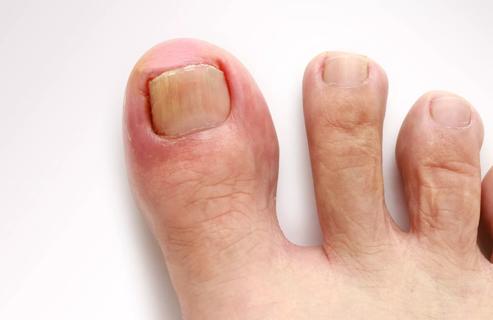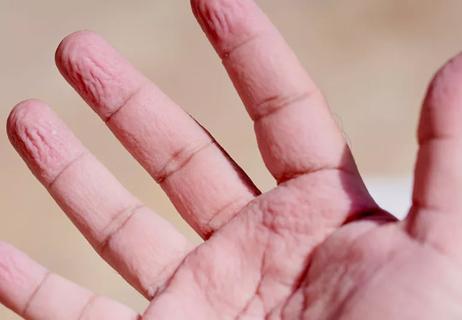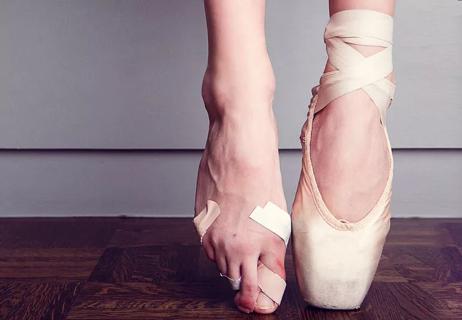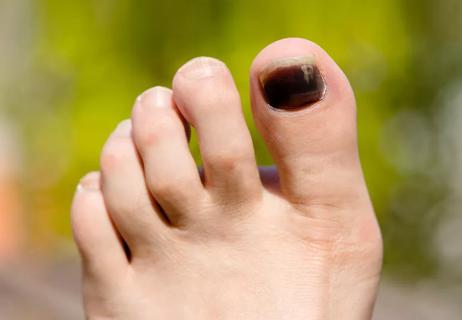Advertisement
Increasingly effective methods available when non-surgical methods don't help

If you’ve had to abandon your favorite pair of pointed ballet flats because your hammertoe has gotten too painful, you might be asking yourself whether surgery is in your future.
Advertisement
Cleveland Clinic is a non-profit academic medical center. Advertising on our site helps support our mission. We do not endorse non-Cleveland Clinic products or services. Policy
This abnormal bending of the toes is certainly common, especially for women, says podiatrist Georgeanne Botek, DPM. But you shouldn’t immediately jump to thinking you need surgery. Hammertoes can usually be managed by nonsurgical methods, including:
Careful choice of shoes. Wearing shoes with a wide and deep toe box can help prevent corns and calluses that you often get when you have hammertoe. Some people find shoes made with mesh or sandals more comfortable.
Strengthening exercises. Toe exercises can strengthen your small muscles to maintain flexibility. “If we can keep toes flexible, they’re less painful,” says Dr. Botek.
Wearable devices. Splints, like Yoga Toes ®, can we worn while you’re sleeping or sitting for long periods.
If hammertoes become stiff, painful and limit activity, surgery may be warranted. Thankfully, Dr. Botek says there are recent advancements in the procedure that make it more effective over the long term.
The number one reason to have surgery is pain. Hammertoes that are flexible and don’t cause pain are considered mild to moderate. Surgery is done for severe deformities that are fixed and immobile and causing pain.
“I don’t usually advise surgery just to fit into shoes,” says Dr. Botek. There are exceptions. “There may come a time when you can’t fit into shoes that you need to wear,” she says.
The most common surgical procedure for hammertoes is proximal interphalangeal (PIP) joint fusion. The toe is straightened and stabilized by permanently fusing the two bones together.
The traditional way to do this is by cutting the ends of the bones in the joint and joining them together. A wire (called a K-wire) is inserted to hold them in place for three to six weeks while they naturally fuse together. At that point, the wire is removed.
“The K-wire is a stainless steel pin that sticks out the front of your toe-kind of like a shish kebab,” says Dr. Botek. “We put a little ball at the end so it doesn’t catch, and we cover the foot with a soft dressing, but most patients don’t like those.”
With a newer approach, rods and screws are permanently implanted in the toe. These don’t stick out, and they aren’t removed. “An advantage is it will hold the toe stable in a reliable position, even if you stub your toe or otherwise injure your foot later on,” says Dr. Botek.
Both surgical procedures are done in an outpatient setting under light sedation. You’ll wear a postsurgical shoe that offloads weight for four to six weeks. “It can take eight to 12 weeks before you are able to wear most of your shoes,” says Dr. Botek.
The surgery is successful 80 to 90% of the time, and the rate of complications is very low. There may be some mild discomfort.
Advertisement
“The most common complaint is stiffness and swelling of the toe, which can last for a few months,” says Dr. Botek. The fixation device loosens or becomes painful in about 1 to 3% of people.
Hammertoe reoccurs in about 5 to 10% of people who have surgery. It’s not always in the same joint or even the same toe. Hammertoe surgery is usually done in the middle joint of the toe. There’s another joint underneath the toenail that may develop a deformity. Or, the next toe over could become destabilized and prone to develop a hammertoe.
It’s common to have multiple hammertoes as well as a bunion. With a bunion, the big toe bends toward the second toe. Over time, the pressure this puts on the second toe can cause a hammertoe.
A bunion and multiple hammertoes often will be addressed in one surgery. “We can operate on more than one toe at a time, but we usually address only one foot at a time,” says Dr. Botek.
If more than one toe is operated on, the procedures may vary. You may have a PIP joint fusion for a hammertoe and a different procedure for a bunion. You may also have a procedure to rebalance the ligaments and tendons around the base of the toe or a procedure to cut and shorten the bones.
Less invasive surgical procedures are being developed for hammertoes. Cutting the bone using minimally invasive approaches (using smaller incisions) is gaining some momentum. And addressing the soft tissue rather than cutting the bone is also being done by some foot and ankle surgeons.
One procedure, called tenotomy, involves cutting the tendon. “We’re not cutting the bone, we’re releasing tendons,” says Dr. Botek.
“The jury is still out in terms of the long-term effects,” says Dr. Botek. Currently, soft tissue procedures are done for more flexible and mild deformities, or for people with medical conditions that make undergoing surgery risky.
This article was adapted from Cleveland Clinic Arthritis Advisor.
Advertisement
Learn more about our editorial process.
Advertisement

Wear properly fitted shoes, break them in ahead of time and wear moisture-wicking socks

Safety, hygiene and technician training are among the biggest benefits of a ‘medi pedi’

Pain meds, toenail protectors and petrolatum jelly may spare you a trip to a podiatrist

Except in certain medical scenarios, foot health experts rarely recommend foot soaks

Your blood vessels shrink and your skin forms wrinkles to help you grip objects

Poorly fitting footwear and overuse injuries can knock you ‘off pointe’

A few precautions can keep your toenails from turning black and falling off

Rethink your exercise routine to maintain — and maybe even gain — fitness during recovery

Focus on your body’s metabolic set point by eating healthy foods, making exercise a part of your routine and reducing stress

PFAS chemicals may make life easier — but they aren’t always so easy on the human body

While there’s little risk in trying this hair care treatment, there isn’t much science to back up the claims